[vc_row][vc_column][vc_column_text]
Thread Lift … The Early Days
Suture material or “threads” have been used to re-position displaced fat pads on the face
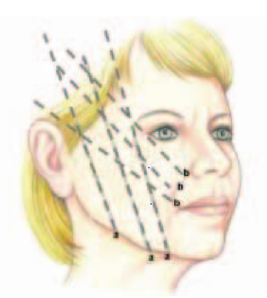
for over 20 years. However, the procedure has been known for its complications in the past due to infection, loss of effect, and erosion of the sutures through the skin.
This permanent material over-stimulated the skin and led to unpredictable results.
PDO is a monofilament absorbable suture material that has been used in general surgery for over 40 years. It is known for its prolonged strength but minimal tissue reactivity. It’s stimulation of tissue is very predictable and has been a mainstay for closing repeat surgeries where scar tissue is present.
One major permanent brand of thread lift “CONTOUR” was pulled from the US market after a brief period of use in 2007. These complications gave threads a bad name, and still may cloud your opinion of threads today.
Beginning in 2014, the use of PDO threads began to dominate thread lifts and began a period of rebirth in the procedure. Led first by highly-skilled doctors in Korea, PDO threads have been used safely and predictably in ways threads have never used before.[/vc_column_text][/vc_column][/vc_row][vc_row][vc_column][vc_column_text]
 The Emergence of PDO Threads
The Emergence of PDO Threads
PDO (Polydioxanone) is the perfect material for both smooth sutures to predictably stimulate new tissue, and barbed sutures which re-position fat and must hold that fat for months at a time. As we age, our facial fat begins to atrophy. What fat that remains loses its connective tissue structure. This results in fat pads that fall over time resulting in jowls, nasolabial folds, and marionette lines.
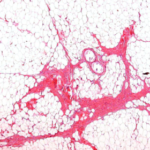
Any kind of thread or suture can help stimulate new tissue and supportive structural bands in that fat. PDO just happens to give the longest-lasting and most consistent response. For months, PDO maintains its structure and continues to stimulate collagen and elastin under the skin while minimizing the negative inflammatory response that we want to avoid.
As surgeons, first in Korea, and then worldwide began using PDO threads, they noticed that complications like extrusion and infection were no longer seen. Results were predictable and repeatable.
Moreover, blood flow to the area increased as well. All of these effects produce a more youthful-looking tissue. This has resulted in treatment protocols where smooth threads can be placed to create volume and tissue contraction with barbed threads re-positioning fallen fat due to age and gravity. Dermal fillers can also aid with lost volume replacement along with PRP (Platelet-Rich Plasma). However, PRP and Dermal Fillers are ineffective at re-positioning fat in the face or elsewhere by themselves. This is where PDO barbed threads are a must-add to any minimally invasive aesthetic practice.[/vc_column_text][/vc_column][/vc_row][vc_row][vc_column][vc_column_text]
Modern PDO Thread Variety
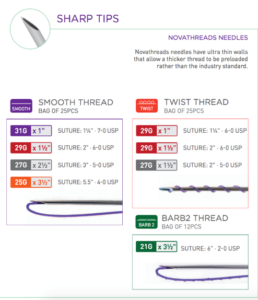
There are many PDO thread manufacturers worldwide, however not all are FDA-approved in every country. It is important to make sure that any threads you use are approved for use in your country. In the USA, NovaThreads offers a variety of smooth, twist and barbed threads of many different sizes. You have a choice of inserting the threads loaded into a standard needle, or inside of a blunt cannula to minimize tissue trauma. Different sizes are chosen depending on the area of the face or body to be treated and the thickness of skin in that area.
Smooth threads can stimulate tissue in a precise manner depending on depth of placement and the number placed in a given area. Twist threads have more surface area and can stimulate more tissue in areas that have greater loss like the major folds and atrophic parts of the face around the mouth.

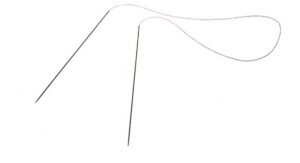
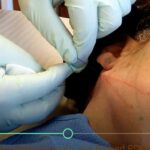
Barbed threads can either fixate tissue or even pull displaced fat against gravity. Perhaps the most important advance are molded barbed threads. These barbs can stay intact for months and create a more lasting effect. Helical barb arrangements grab hold of the target fat and anchor even better than linear barbs. Long barbed threads with double needles like MINT EASY can effectively support the submental region with two support zones using just one thread. Barbed PDO Threads can effectively support gravitational fat changes in the face. When two or more barbed threads are placed though the same puncture, they can be tied or twisted to customize the tightening of the tissue below.[/vc_column_text][/vc_column][/vc_row][vc_row][vc_column][vc_column_text]
Synergy Between PDO Threads and Other Procedures
Botulinum Toxin can effectively immobilize the forehead, brow, or crow’s feet area, allowing threads to be placed and make the maximum amount of supportive collagen. Tissue production is always stronger if movement of the target tissue can be minimized.
Dermal Fillers provide immediate, extra volumization of certain areas where PDO threads might take weeks to months to create the long-term tissue that will help support the area after the dermal filler wears off.
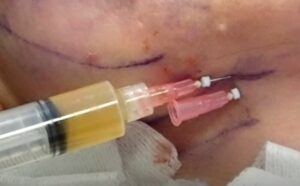
PRP (Platelet-Rich Plasma) can stimulate new vasculature and tissue growth in very different ways that PDO threads can. So when both can be used together, it can create a very powerful synergy for producing new tissue economically and without any prescription or drug agents.
For patients who want to turn back the clock on their facial volume loss, they can repeat smooth threads and PRP every few months instead of yearly, which would be more appropriate for a patient who wants to simply slow down the clock.
No aesthetic service from the last 20 years has more potential benefits, and synergies than PDO Threads. There is no better time than now to add this exciting new service to your practice.[/vc_column_text][/vc_column][/vc_row]